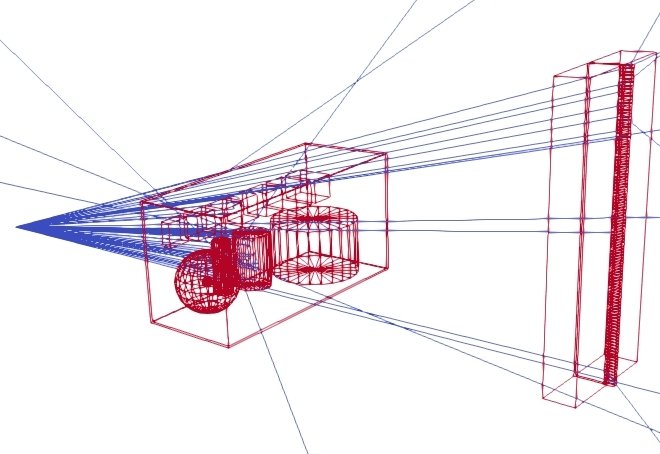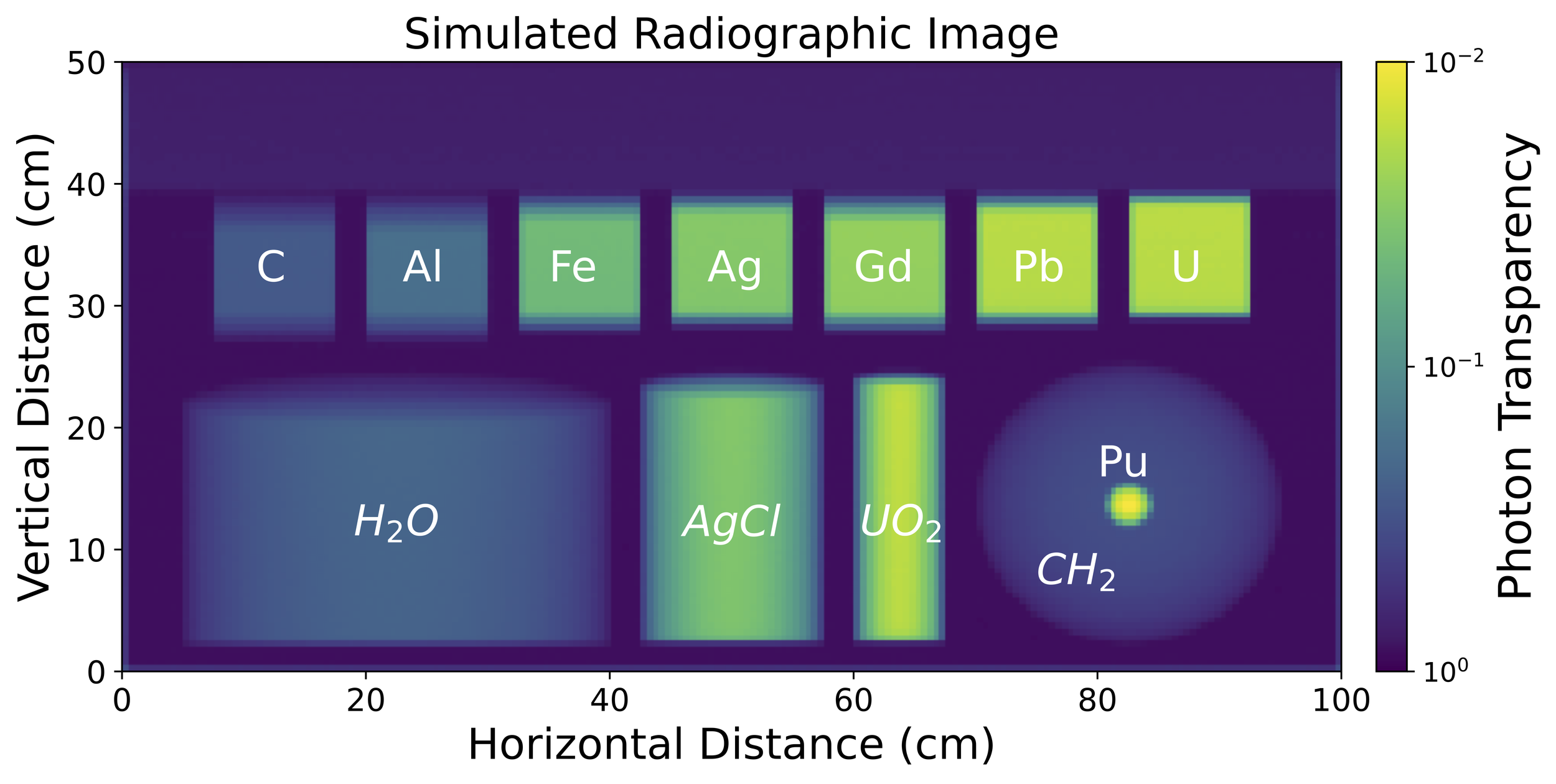Each year, Customs and Border Protection (CBP) processes more than 32.7 million cargo containers through U.S. ports of entry. A potential security concern is that a terrorist could smuggle nuclear material through U.S. ports and subsequently assemble a nuclear weapon. One avenue by which the CBP addresses this threat is by scanning cargo containers using non-intrusive inspection (NII) technology. These radiography scanners direct X-rays and/or gamma rays through a cargo container, producing a density map of the container. Dual energy scanners use two interlaced photon beams with different energy spectra, enabling the systems to make predictions about the material’s atomic number, or Z, enabling improved detection of high-Z nuclear threats.
However, existing methods for material identification typically require a burdensome calibration step in which a large number of materials are scanned at different thicknesses to empirically construct lookup tables. Furthermore, these approaches typically only categorize materials according to a few material classes and thus offer limited atomic number selectivity and poor extrapolation capabilities. Other material identification methods rely on analytic models for photon attenuation which neglect photon scattering and thus yield poor atomic number reconstruction accuracy. This work introduces that a hybrid approach — by using calibration scans of a few different materials, it is possible to modify the analytic model to better reconstruct experimental data. This method yields high atomic number reconstruction accuracy with a much simpler calibration step.
Applying this model to simulated radiographic images yields more precise material predictions than methods which are in current use. However, despite these advances, dual energy systems suffer from fundamental limitations in their ability to identify materials by their Z. Even still, dual energy radiography offers clues which can enhance the ability to identify nuclear threats in cargo containers.
Research Team:
Peter Lalor
Prof. Areg Danagoulian
Relevant publications:
Peter Lalor, Areg Danagoulian, “A semiempirical transparency model for dual energy cargo radiography applications,” NIM A, Vol. 1051 (2023) ,https://doi.org/10.1016/j.nima.2023.168193
Peter Lalor, Areg Danagoulian, “Fundamental Limitations of Dual Energy X-Ray Scanners for Cargo Content Atomic Number Discrimination,” Applied Radiation and Istotopes, Vol. 206 (2024) 111201, https://doi.org/10.1016/j.apradiso.2024.111201
Peter Lalor, Areg Danagoulian, “Atomic number estimation of dual energy cargo radiographs using a semiempirical transparency model,” NIM A, Vol. 1064 (2024) 169349 https://doi.org/10.1016/j.nima.2024.169343, https://arxiv.org/abs/2307.12099



